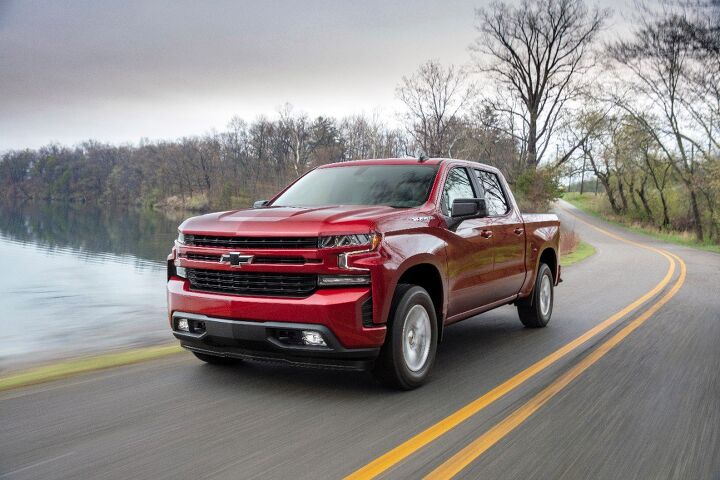Eye Spy: GM Engineers Hopped on the Ford Tour for Pickup Inspiration

Figuring out how best to shave weight from the next-generation Chevrolet Silverado and GMC Sierra wasn’t an easy task, with some General Motors engineers resorting to taking public tours of Ford’s Dearborn truck assembly plant just to see how their rival handled its all-aluminum body.
Ultimately, GM opted for a hybrid solution of sorts — some aluminum, backed up by varying grades of steel, to slim down its 2019 full-size pickups. But the obsession with Ford didn’t end with the plant tours.
Speaking to Reuters, Tim Herrick, executive chief engineer for GM’s truck programs, said his spies noticed, “[Ford] had a real hard time getting those doors to fit.” With stopwatches in hand, they watched and timed the operation as the F-150s moved down the line.
Focusing on the doors, Herrick’s team bought and disassembled F-150 doors sold as parts. It was then they realized GM could get away with using thinner, high-strength steel plus aluminum to shed pounds (up to 450 lbs per vehicle), without having to make the entire body from the lightweight commodity. Seven grades of steel make up the cab, while aluminum is the material of choice for the doors, hood, and tailgate.
Tariffs and rising aluminum prices are currently hurting Ford’s profits, but GM’s not exactly outside the boat. There’s also new tariffs on imported steel, and the rise in commodity prices have taken a chunk out of GM’s earnings, too. Still, the team’s glad they didn’t go all-aluminum.
Herrick claims the company battled with the decision at all levels (“it was a really hotly contested item for us”), but feels the decision to mix metals will ultimately help the company reap a larger windfall per truck.
“We think we have thousands of dollars advantage (over Ford) just in the aluminum costs. It’s big,” he said, adding that the extra profit will help fund other programs while keeping shareholders happy.
The reduced weight of the slightly larger crop of 2019 pickups meant the opportunity to do the unthinkable: add a four-cylinder offering to the engine mix. Backed by a host of efficiency-minded tech, GM’s turbocharged 2.7-liter “Tripower” inline-four generates 310 horsepower and 348 lb-ft of torque, and could give the General an edge in the full-size fuel economy fight. Currently, no EPA ratings exist for this mill.
We’ll have a first-drive of the 2019 Silverado for readers next week.
[Image: General Motors]

More by Steph Willems
Latest Car Reviews
Read moreLatest Product Reviews
Read moreRecent Comments
- Carson D They'd have kept it going, but the head bolts had worn out from overuse.
- ToolGuy Superb writeup. Thank you for sharing your experience and insights on your 2004 Outback -- this is the best take on Subaru ownership that I've seen.
- Scott I'm afraid of Clickbait, as it's so annoying..(And don't ask me about autonomous car clickbait)
- ToolGuy Nice writeup. Good photography.
- Detlump I almost bought a dark red one of these when I was cross-shopping Volvo wagons. I didn't like the frameless glass of the doors but it was a close call. I wanted a wagon for my hockey gear and also carrying parts as I was an engineer at the time. SUVs weren't a thing at that point and I wanted an enclosed, secure cargo area.I ended up going with a 95 850 wagon and it has served me well. The only time it left me stranded (temporarily) was when the coil wire popped off. I also got a flat tire, but I can't blame the Volvo for that. BTW, I still have the 950 with 263,000 miles - just changed the timing belt too - I have that process down to about an hour by now!


































Comments
Join the conversation
And this is what they were so inspired to build? Another third rate truck from a company that couldn't care less about building a competitive product.
Considering that we've caved into other countries' desires for years, it is time to give them a taste of their own medicine.